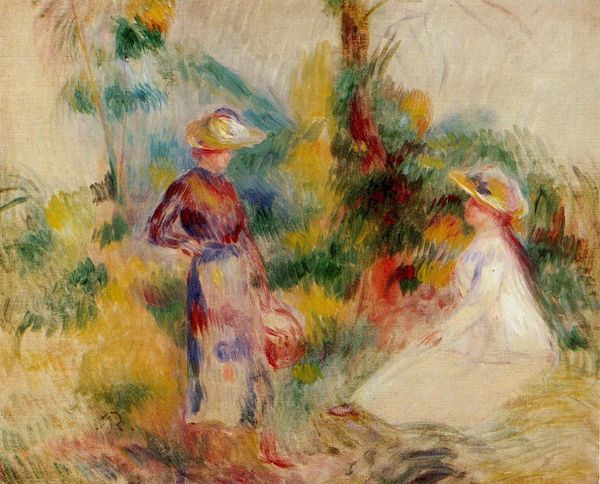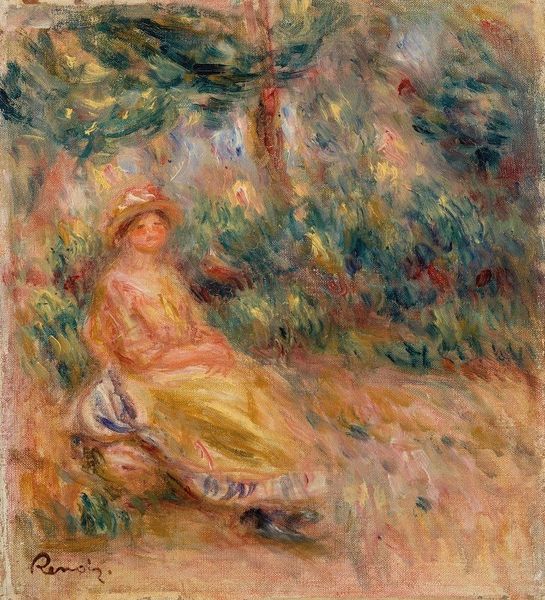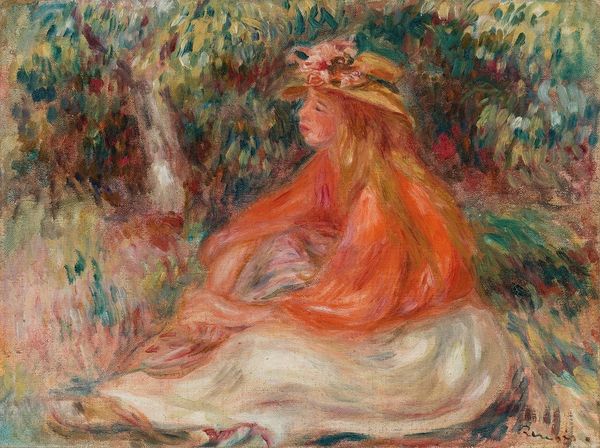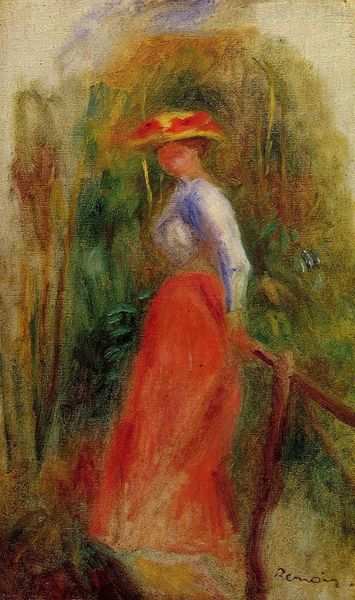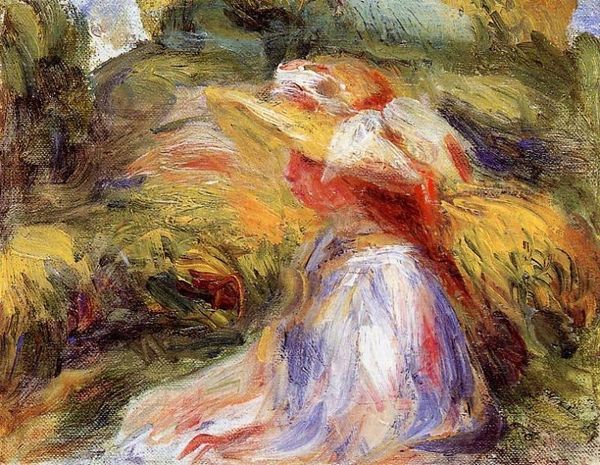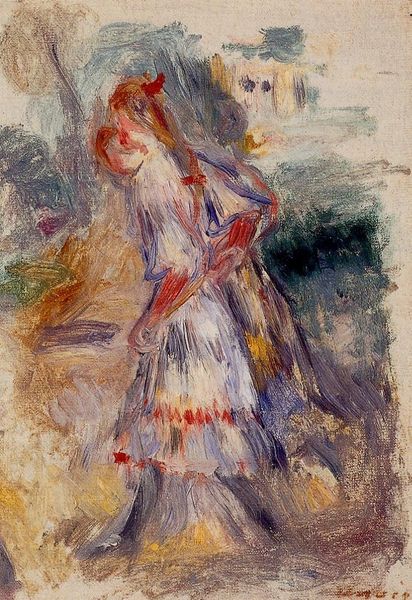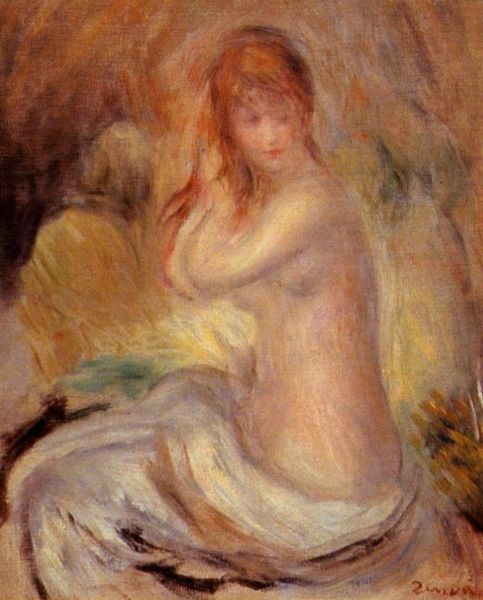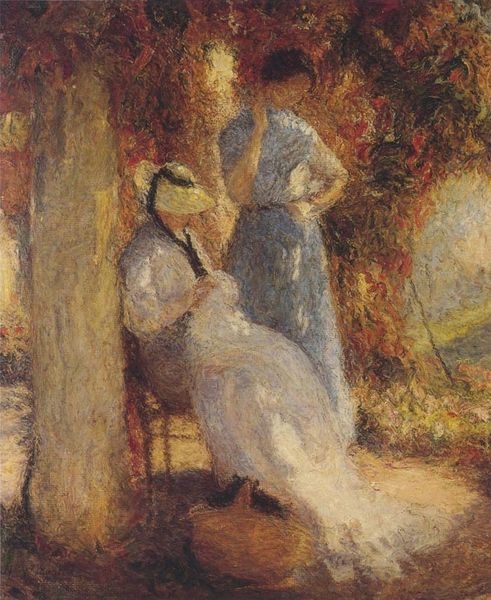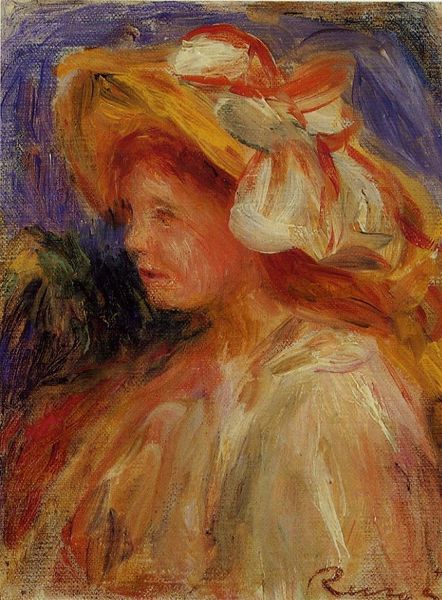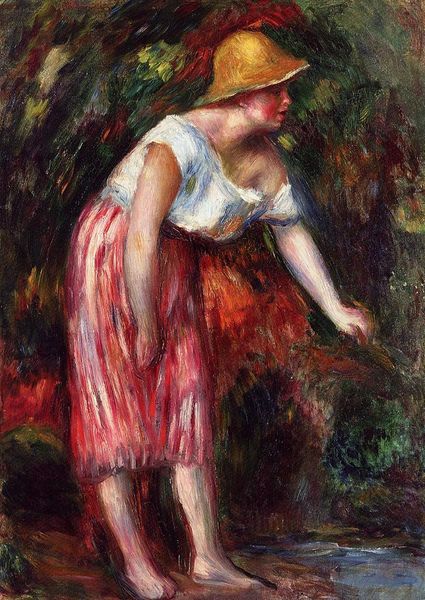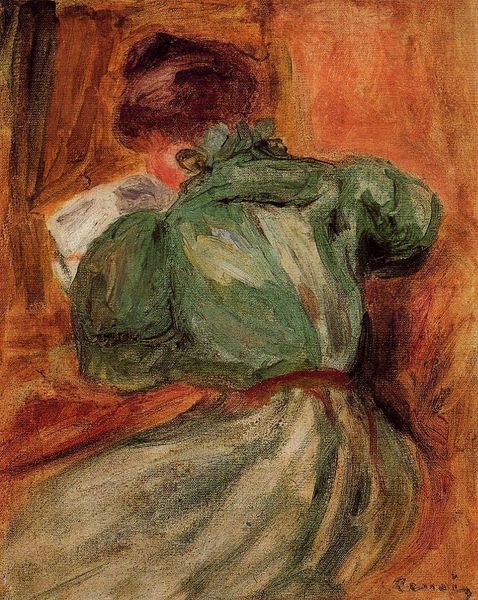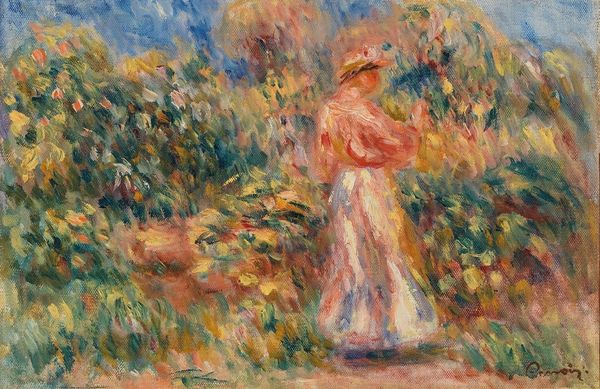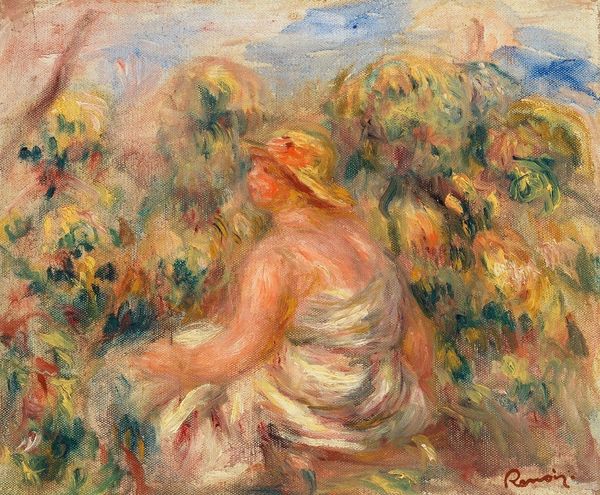
Copyright: Public domain
Curator: "Young Girl in the Woods," created by Pierre-Auguste Renoir in 1910, presents us with a moment of quiet repose, painted en plein air in oil on canvas. Editor: There's a luminous quality here, isn’t there? A diffused, almost dreamlike rendering of the scene, particularly in the way the light interacts with the foliage. Curator: Absolutely. What we're seeing is deeply connected to late 19th and early 20th-century bourgeois leisure. The subject, a young woman, is depicted enjoying her time in nature, shielded from the sun and potential prying eyes. Her placement suggests a certain class privilege, this leisure time being supported by domestic help back in town and afforded only by those not involved with physical labor. Editor: And this speaks through the materiality itself. Renoir’s use of broken brushstrokes dissolves form, softening outlines, especially in the dress. It creates an overall effect of light and movement; very poetic. Curator: Indeed. And that informality also challenges academic art traditions and social hierarchies of that time, pushing to redefine the art world from a non-male gaze. Editor: Semiotically, the hat conceals more than it reveals. It shields her face, yet paradoxically, this makes her an object of interest, inviting speculation rather than revealing identity. It turns her into something akin to a trope. Curator: The absence of direct eye contact, that obfuscation through the hat, directs our gaze back toward ourselves. Are we looking at a person, or at our idealized version of what she might represent: the idealized French feminine aesthetic? How complicit are we, even today, in ascribing narratives and values? Editor: Perhaps she’s just a person relaxing. What resonates is the sheer pleasure of observing how light interacts with surface texture, the way the eye blends dabs of paint into form. That’s the core artistic impulse. Curator: Precisely, which circles us back to the historical narrative and a reminder that every artistic interpretation reflects social context, and of course, an aesthetic preference! Editor: It's been a pleasure seeing how you’ve built the story that lives within and around the piece and what stands outside of it. Curator: As always, understanding the piece within social, economic, and political context illuminates the artistic practice, its intentions, as well as the interpretation it receives!
Comments
No comments
Be the first to comment and join the conversation on the ultimate creative platform.

